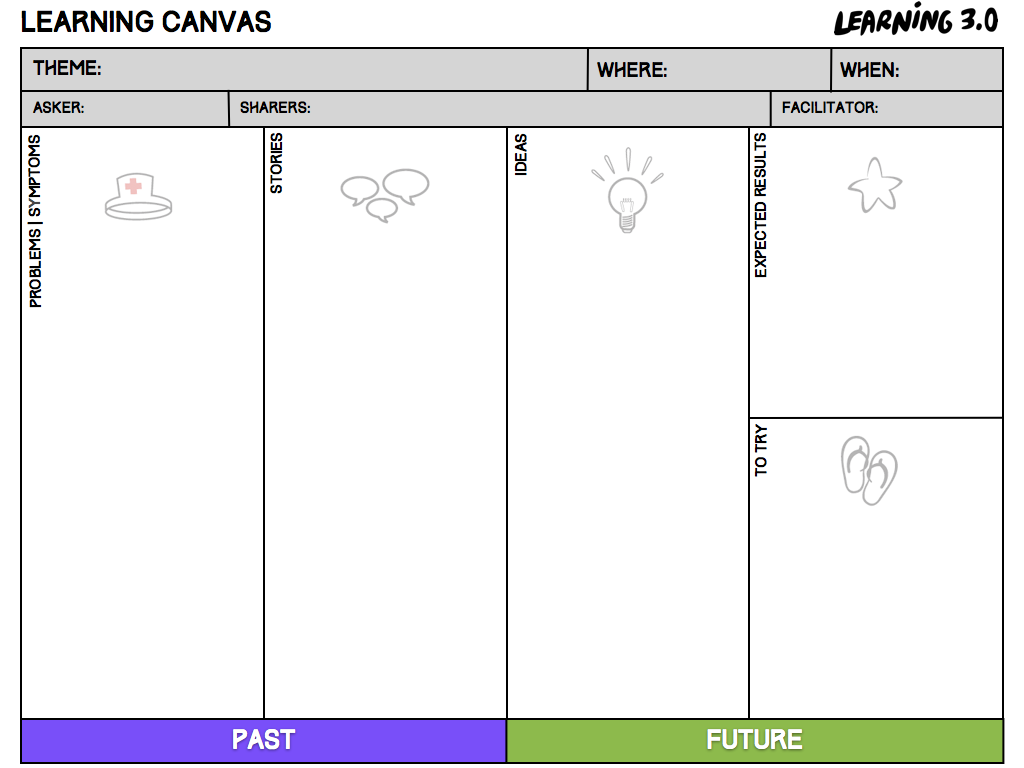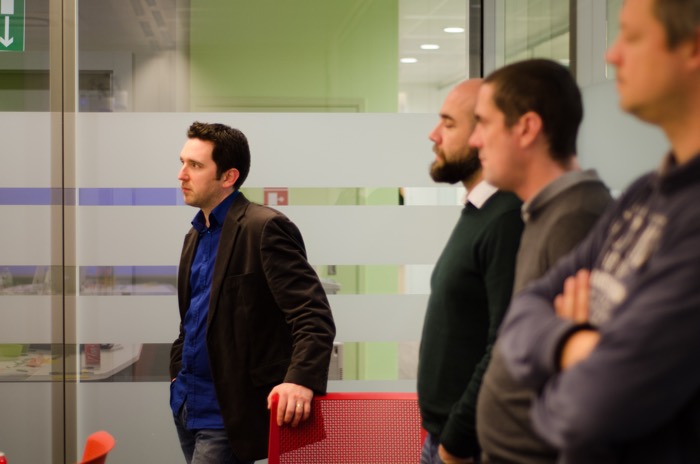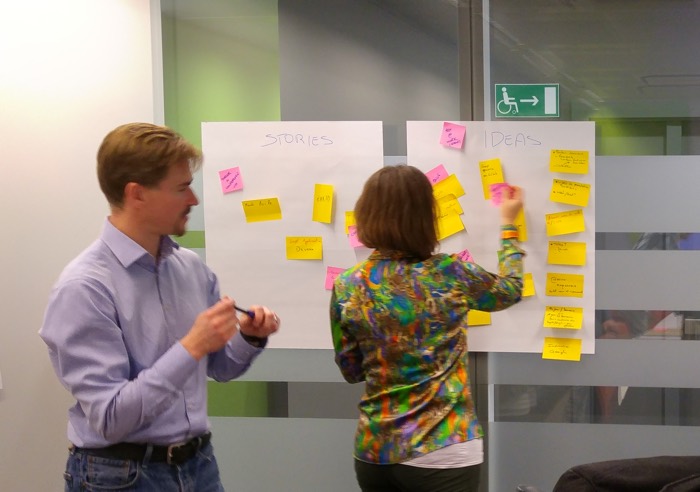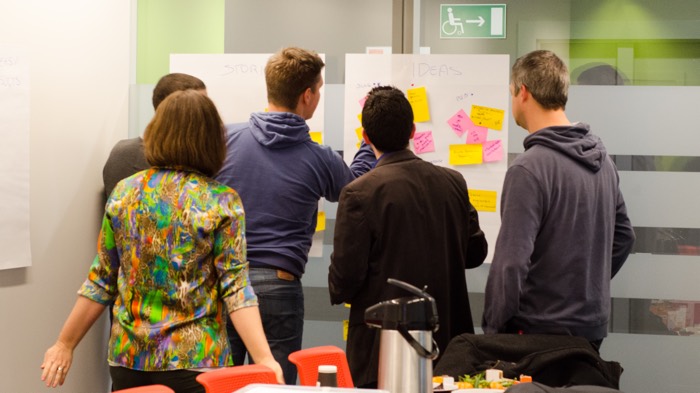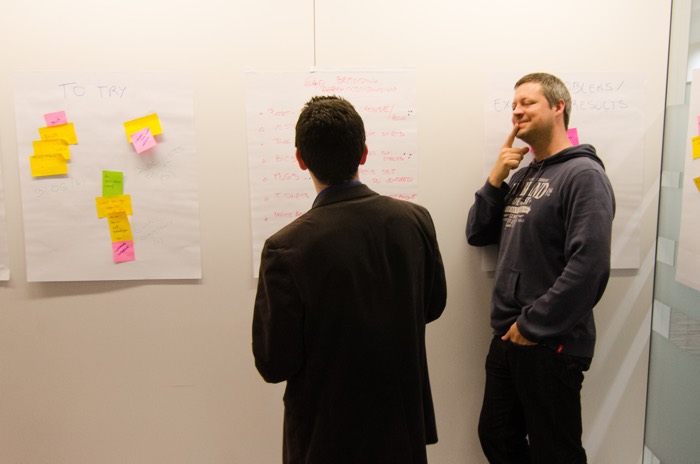Experience Learning Canvas
Like most companies, we would like to increase our visibility quotient, having more people knowing who we are and what we do. This is actually one of the company objectives for 2016.
Knowing this objective was already addressed in the past, with very mixed results, the management team was looking for a new approach, a collaborative one, that fostered individual engagement.
In this context, Learning Canvas was this new approach we found, and were willing to experiment….
Why Learning Canvas?
This tool intends to fix real problems while trying to learn from the group. It has the benefits of:
- Blurring the difference between experienced individuals, and not so experienced individuals. This avoids experts to run the show.
- Allowing everyone to express themselves, the shy guys too.
- Giving equal importance to past experiences and to new ideas.
Why not a simple brainstorming session? Brainstorming sessions without a structured framework are usually, not efficient. Most of the time, ideas burst from the most expressive people, or the experts in the subject.
Hereunder you’ll find our feedback on how we used Learning Canvas during our first session of this type.
How we used Learning Canvas?
Our facilitator explained the model and the steps of the process.
Our theme of discussion was not easy. We could feel the surprise with the choice of this model. Someone muttered, “it is a very simple model”. But we all were willing to contribute and it was in a very good mood that we began the session.
1) Describe theme, problems and symptoms
Our CEO, in the role of asker, explained the theme of our discussion. He listed some problems and symptoms that he knew.
This concern affects everyone in the company. We asked all participants to share the problems related to this issue. Each one collaborated with new elements. Our scenario became more complete and richer.
This allowed us to better understand the problem.
2) Elaborate the ideal vision
We created together our ideal vision with some minutes brainstorming. We could share our vision and arrive to a common goal.
What we could do to help us get there? Talks? Articles? Promotional items? In the processes of construction of the ideal vision we had a lot of insights.
We created a list of possible actions and we asked all participants to vote and to choose 3. We took one of them, “Promotional Items”, and we went further into the subject.
What are the best products to represent our company? What are the best products in line with the values of the company from the standpoint of our consultants? Would our consultants be willing to use these products?
3) Share past experiences and/or share ideas
We limited to two experiences/ideas per person. We asked the participants, not only to share successful experiences, but also unsuccessful ones. Why unsuccessful experiences? In order to avoid falling in some traps. Arexo already made some promotional items in the past. And it didn’t work as expected.
Why we decided to mix past experiences and ideas? Because we thought in this way that each one could contribute, even if they have no experience. Each one had the opportunity to talk and explain his experiences/ideas. While participants spoke, the post-its were organized by theme for our facilitator.
After this first tour, we made a new brainstorming tour to figure out if the share process could create new ideas. The answer was positive. New ideas popped in our framework.
4) Create an Action Plan
When the tour ended, we asked the participants to vote on the top 3 ideas. Those had a better chance of success and higher ROI.
We made a short actions list for each of them and asked for volunteers to perform the actions.
Conclusion
Mission accomplished! The canvas worked and all of us collaborated to find the right product.
Someone said that Learning Canvas is a very imposing name for a simple tool. It’s simple to use and efficient. We could keep focused on our problem, not on the method or the canvas.
Here you can find more information about Learning Canvas:
http://www.happymelly.com/how-to-improve-your-meetings-by-using-the-learning-canvas/

